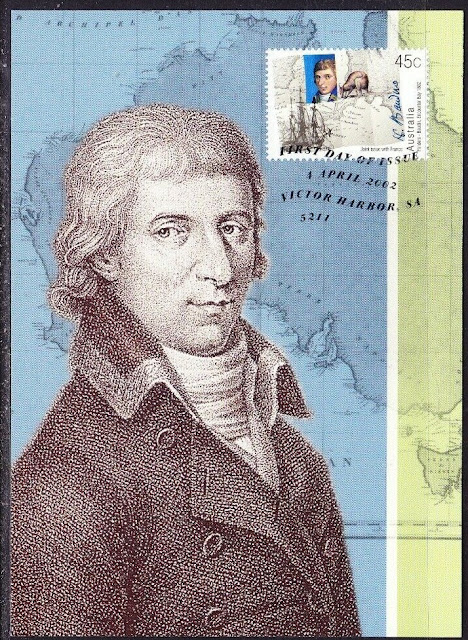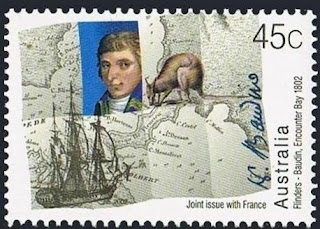Here are some events that happened on September 16th. It could be an event or a person that died or was born on that day
1736 – Daniel Gabriel Fahrenheit, Polish-Dutch physicist and engineer, invented the thermometer (b. 1686)
Daniel Gabriel Fahrenheit (24 May 1686 – 16 September 1736) was a physicist, inventor, and scientific instrument maker. Fahrenheit was born in Danzig (Gdańsk), then a predominantly German-speaking city in the Pomeranian Voivodeship of the Polish–Lithuanian Commonwealth, but lived most of his life in the Dutch Republic (1701–1736) and was one of the notable figures in the Golden Age of Dutch science and technology.
A pioneer of exact thermometry, he helped lay the foundations for the era of precision thermometry by inventing the mercury-in-glass thermometer (first widely used, practical, accurate thermometer) and Fahrenheit scale (first standardized temperature scale to be widely used). In other words, Fahrenheit's inventions ushered in the first revolution in the history of thermometry (branch of physics concerned with methods of temperature measurement). From the early 1710s until the beginnings of the electronic era, mercury-in-glass thermometers were among the most reliable and accurate thermometers ever invented.
German stamp and First Day Cover depicting Fahrenheit's scale
1803 Died: Nicolas Baudin, French explorer, hydrographer, and cartographer (b. 1754)
Nicolas Thomas Baudin (17 February 1754 – 16 September 1803) was a French explorer, cartographer, naturalist and hydrographer.
In October 1800 Baudin was selected by Bonaparte to lead what has become known as the Baudin expedition to map the coast of Australia (New Holland). He had two ships, Géographe and Naturaliste captained by Hamelin, and a suite of nine zoologists and botanists, including Jean Baptiste Leschenault de la Tour. Nicolas Baudin left Le Havre on 19 October 1800, stopped off in Santa Cruz de Tenerife, then sailed straight to the Ile de France arriving on 15 March 1801, 145 days later. The voyage, overlong with early rationing left sailors and scientists feeling discouraged, but the colony was happy to build up the crews in case of conflict and to make use of the new skills they brought with them. He reached Australia in May 1801, and would explore and map the western coast and a part of the little-known southern coast of the continent. The scientific expedition proved a great success, with more than 2500 new species discovered. The French also met Aboriginal peoples and treated them with great respect.
In April 1802 Baudin met Matthew Flinders, also engaged in charting the coastline, in Encounter Bay in present-day South Australia. Baudin then stopped at the British colony at Sydney for supplies, and from there he sent home the Naturaliste, carrying all of the specimens that had been collected by both ships up to that time. Realising that the Géographe could not venture into some of the shallow waters along the Australian coast that he was intending to survey, he bought a new ship — Casuarina — named after the wood it was made from, and placed it under the command of Louis de Freycinet, who would 15 years later make his own circumnavigation in the corvette l'Uranie. He then headed back to Tasmania, before continuing along the southern and western coasts of Australia to Timor, mapping as he went. In very poor health, he then turned for home, stopping at Mauritius, where he died.
According to recent researches by academics from the University of Adelaide, during Baudin's expedition, François Péron, who had become the chief zoologist and intellectual leader of the mission, wrote a report for Napoleon on ways to invade and capture the British colony at Sydney Cove.
Baudin died of tuberculosis at Mauritius on 16 September 1803, at the age of 49, apparently in the home of Madame Alexandrine Kerivel. Baudin's exact resting place is not known, but the historian Auguste Toussaint believed that he was interred in the Kerivel family vault.
In South Australia, the following places bear Baudin's name – Baudin Beach on Kangaroo Island, Baudin Rocks on the south-east coast of the state and Nicolas Baudin Island on the west coast of Eyre Peninsula. A number of monuments have been established around Australia, including eight at various locations around Western Australia.
Six animals are named in honour of Baudin:
Calyptorhynchus baudinii Lear, 1832 – Baudin's black cockatoo
Smilisca baudinii (A.M.C. Duméril & Bibron, 1841) – common Mexican tree frog (Hylidae)
Emoia baudini (A.M.C. Duméril & Bibron, 1839) – Baudin's emo skink (Scincidae)
Pseudemoia baudini (Greer, 1982) – Bight Coast skink (Scincidae)
Zanclea baudini Gershwin & Zeidler, 2003 – a jellyfish (Zancleidae)
Baudin pig – a once feral landrace on Kangaroo Island
Stamps from France and Australia depicting Baudin
1837 Born: Pedro V of Portugal (d. 1861)
Peter V (Portuguese: Pedro V Portuguese pronunciation: 16 September 1837 – 11 November 1861), nicknamed "the Hopeful" (Portuguese: o Esperançoso), was King of Portugal from 1853 to 1861.
As the eldest son of Queen Maria II and King Ferdinand II, Peter was a member of the House of Braganza. As heir apparent to the throne he was styled Prince Royal (Portuguese: Príncipe Real), and was also the 19th Duke of Braganza (Duque de Bragança).
Peter was a conscientious and hard-working monarch who, under the guidance of his father, sought radical modernisation of the Portuguese state and infrastructure. Under his reign, roads, telegraphs, and railways were constructed and improvements in public health advanced. His popularity increased when, during the cholera outbreak of 1853–1856, he visited hospitals handing out gifts and comforting the sick.
Pedro V, along with his brothers Fernando and João and other royal family members, succumbed to typhoid fever or cholera in 1861.
Portuguese stamps depicting Pedro V







No comments:
Post a Comment